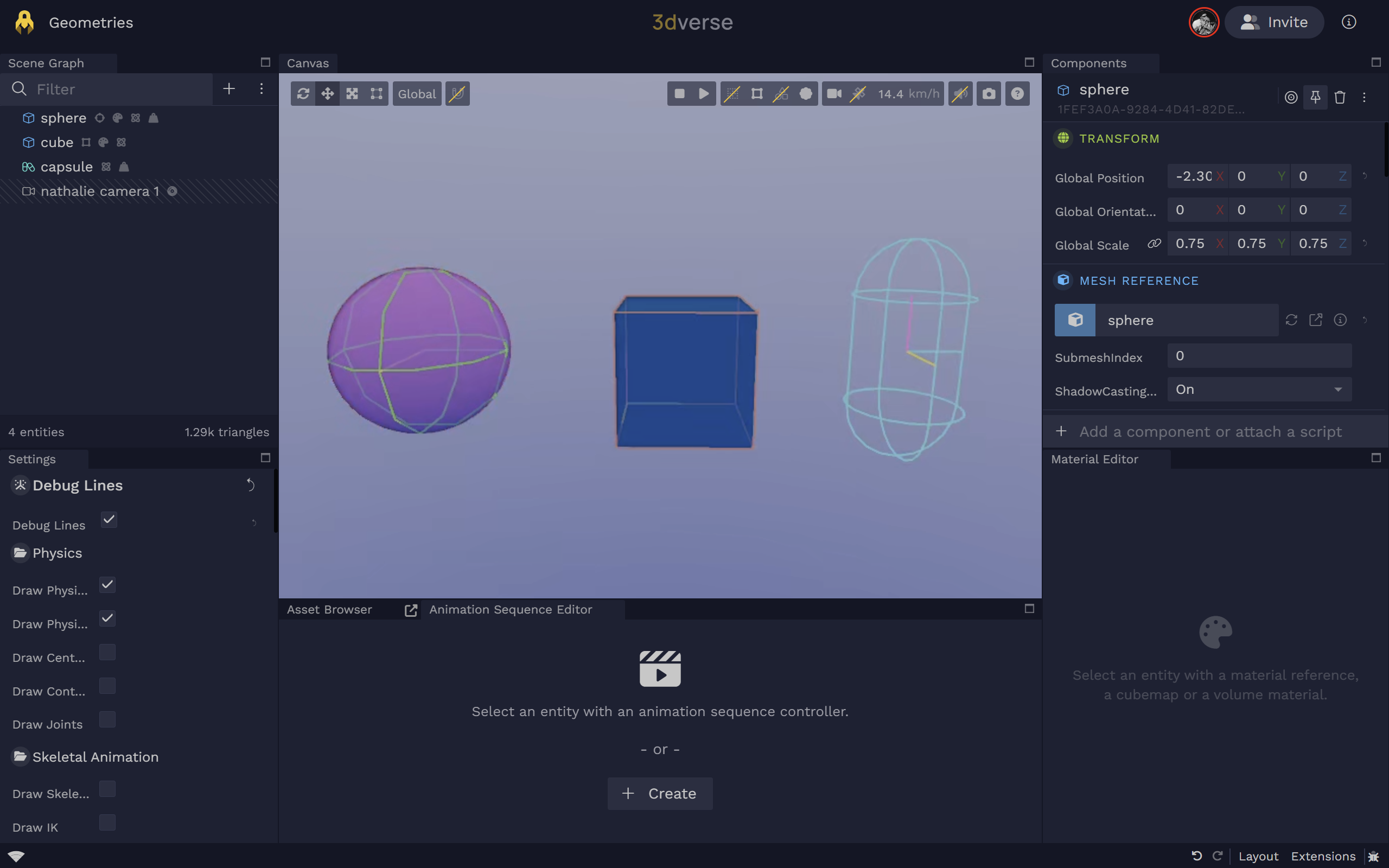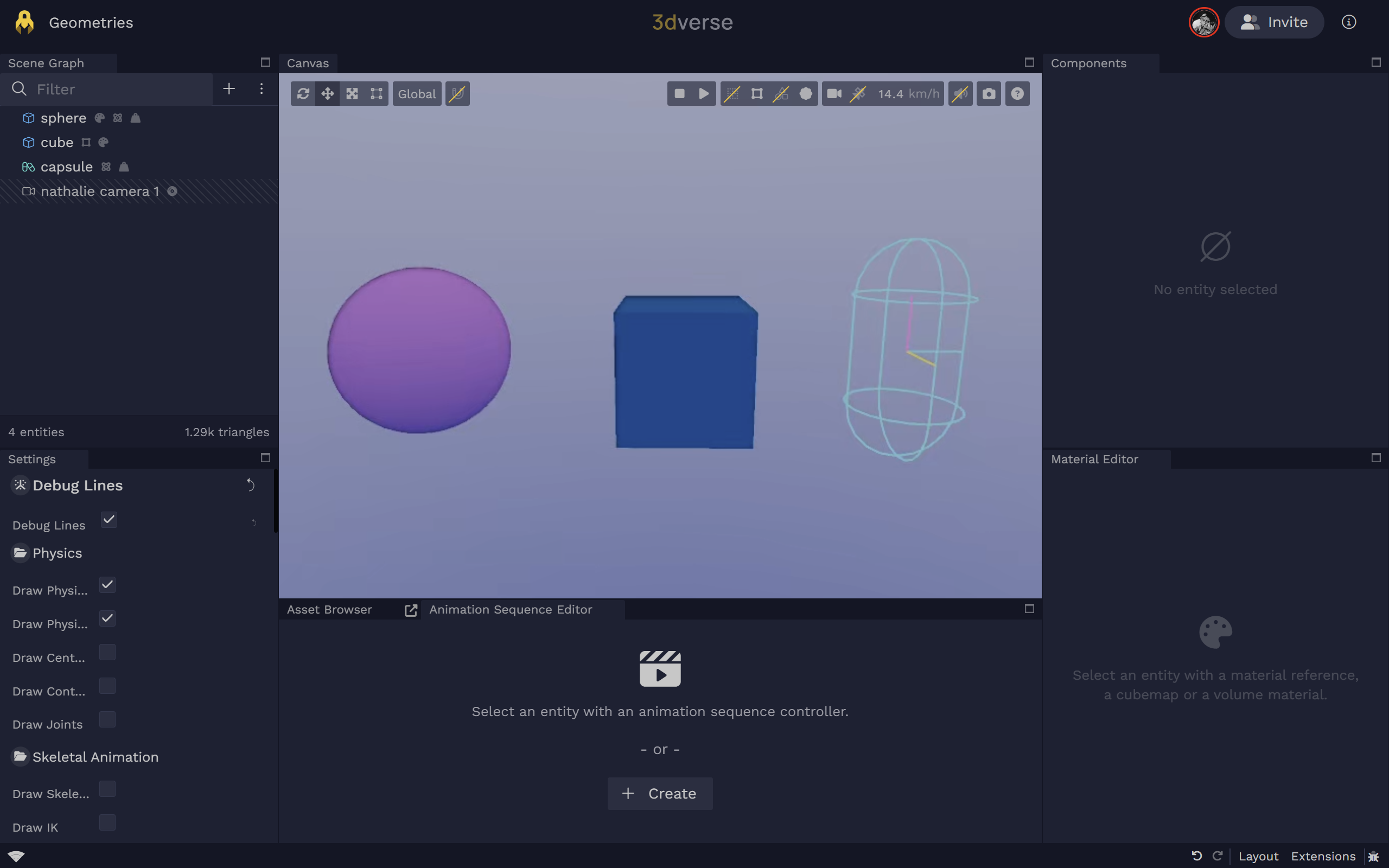Key Concepts
In your 3D world, you may want to simulate physical behavior and physical interactions between objects. The following pages will show you how to set up these kinds of physical simulations in 3dverse.
There are three different kinds of physics bodies: static body, rigid body and kinematic rigid body. There is also a special kind of physics body called a character controller, which should be used for playable, human-like characters. These all have different behaviour during simulation and when they collide with one another.
Collision
Collision detection is the detection of two physics bodies overlapping, or colliding. Collision resolution is the way that this detection is resolved. Depending on the bodies involved in the collision, collision resolution can be different. For example, a character controller uses a different collision resolution algorithm than a rigid body.
Simulation
Simulation is a state of the engine during which the physics engine is running. During simulation, physics bodies will interact with each other according to the way they were configured. Their transforms could change. When you stop simulation their original transforms will be restored.
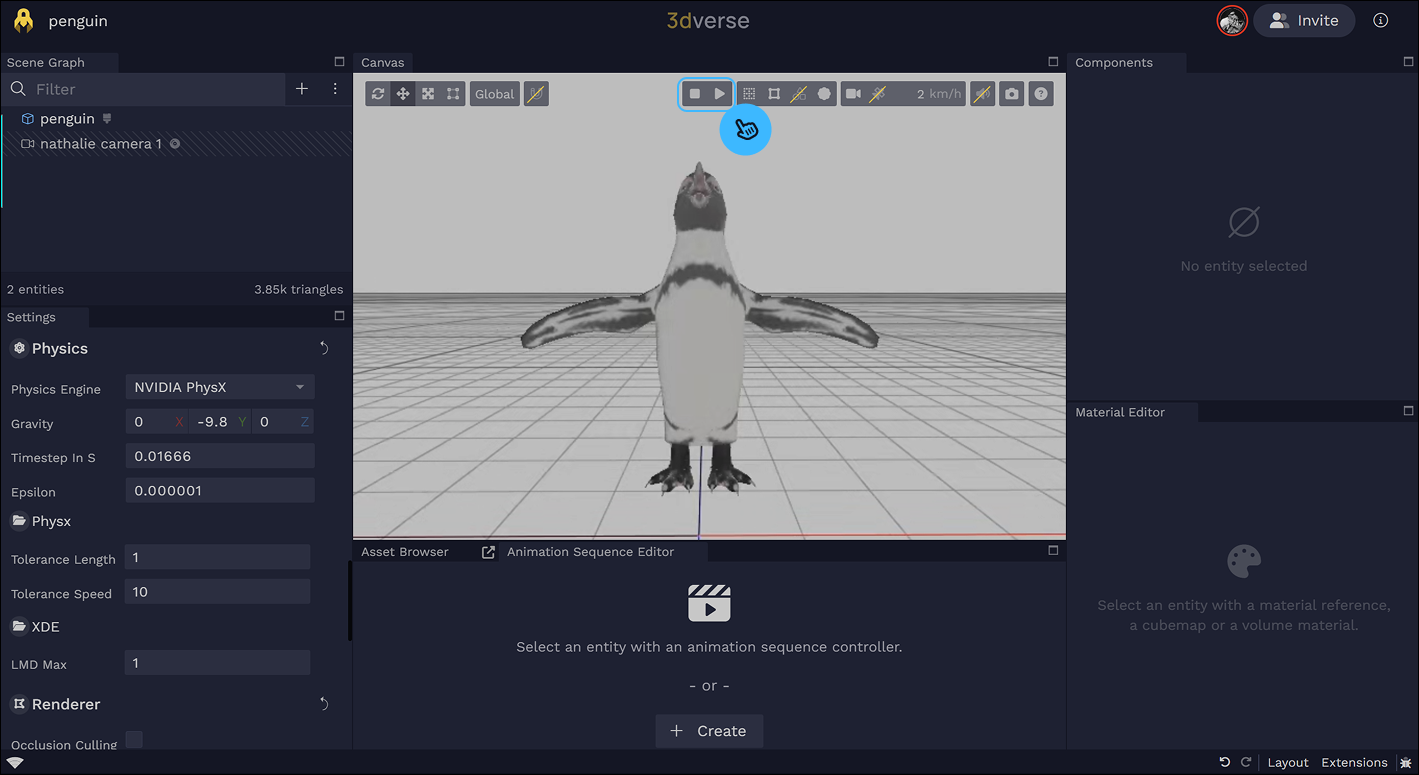
To start, pause and stop the simulation in the scene editor press the
and
buttons in the canvas toolbar.
Physics Bodies
The physics bodies you can create are:
- static body
- rigid body
- kinematic rigid body
- character controller
Each of these physics bodies require you to attach some kind of geometry to them which will define their geometry in the physics engine. In fact, the physics engine only “sees” these geometries, and will detect collision of your physics bodies by checking for overlap between these geometries.
Go to Physics Bodies for further information.
Debug Lines
To see what the physics engine sees, enable debug lines. This will allow you to verify if your physics bodies have been well set up. If you can see the debug lines of your geometry, that means your entity has been well registered inside the physics engine.
To enable debug lines, toggle the Enable Debug Lines
icon in the canvas toolbar. You can configure which physics debug lines you want to show in the scene settings.
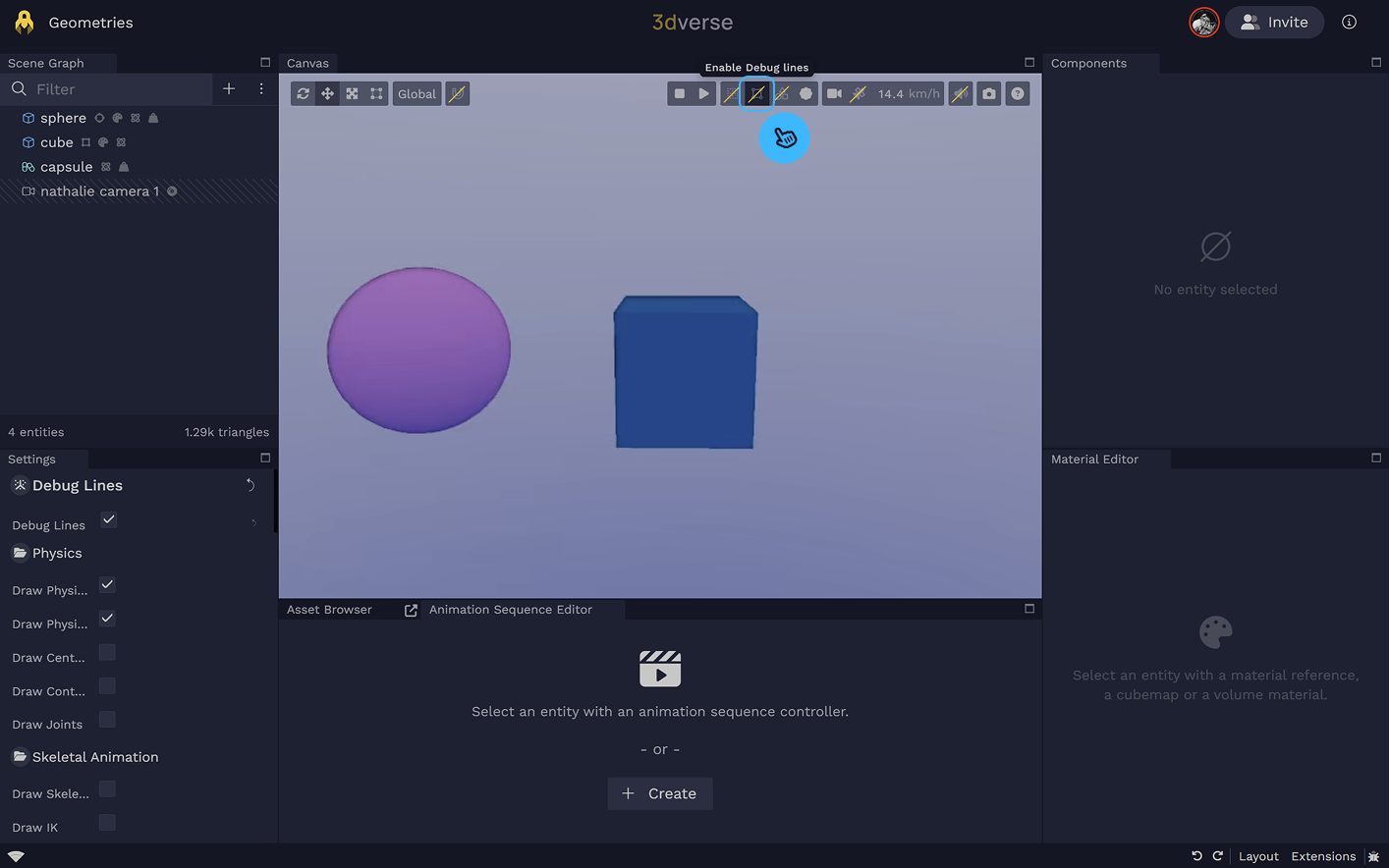
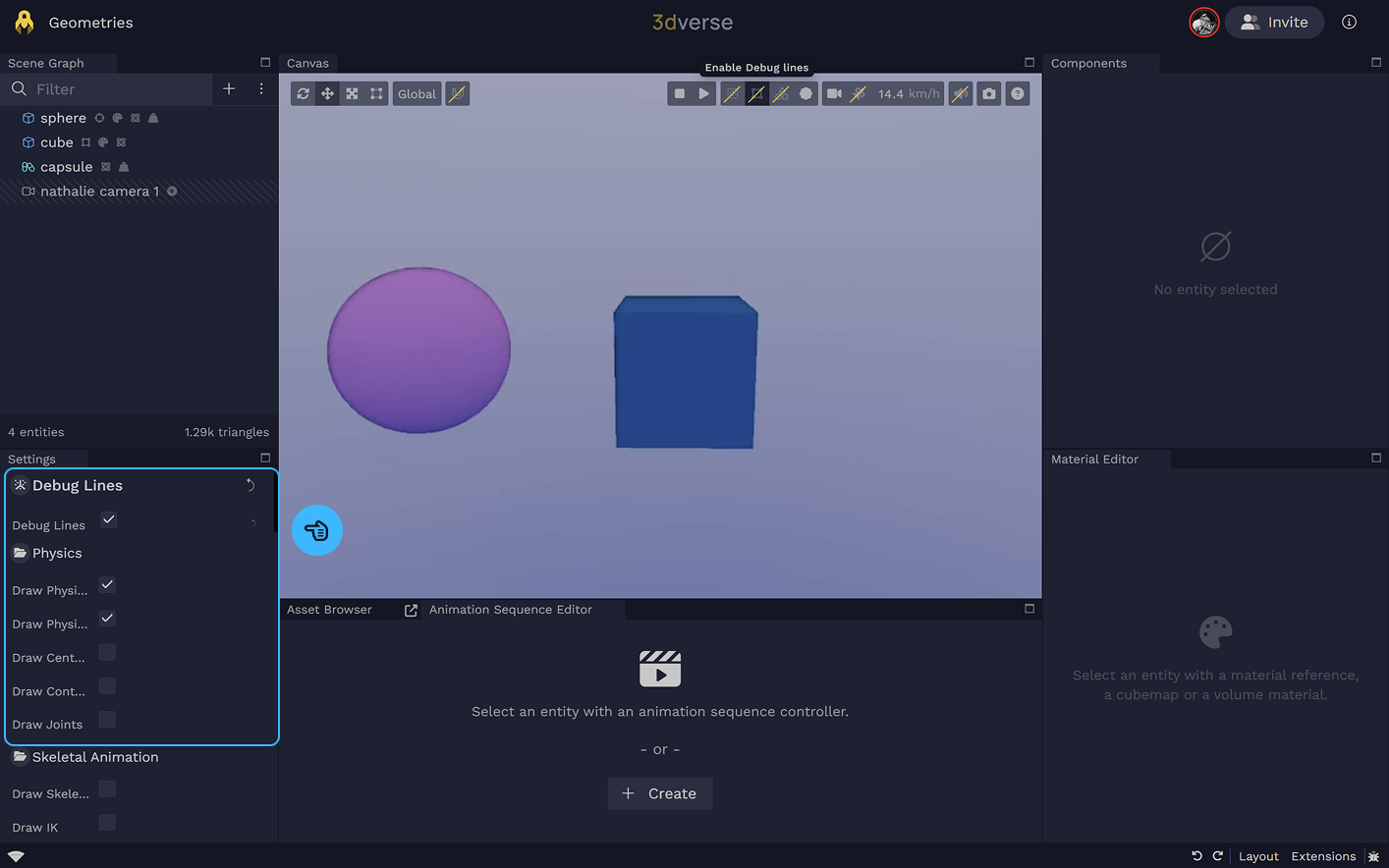
If you see lines around the entities you configured as physics bodies, you’re good to go. Otherwise check if you have a missing component.
